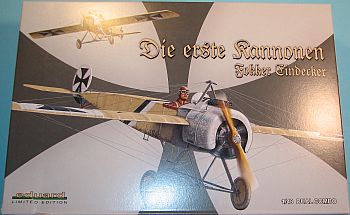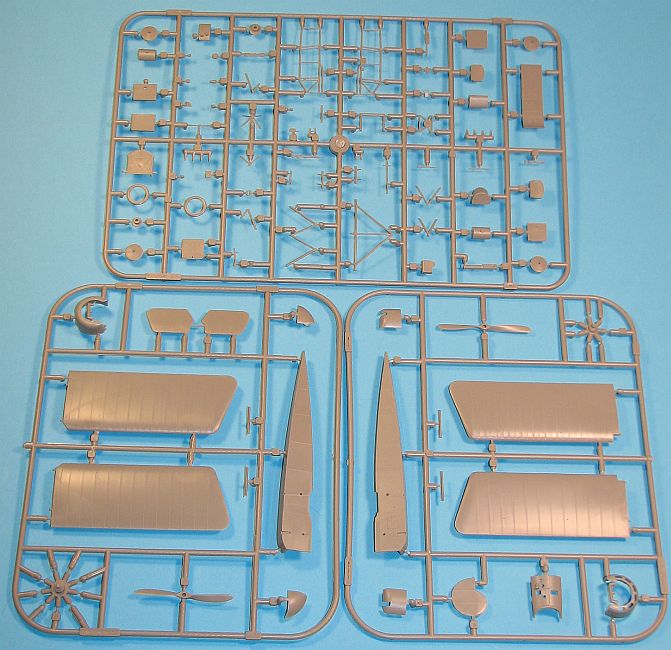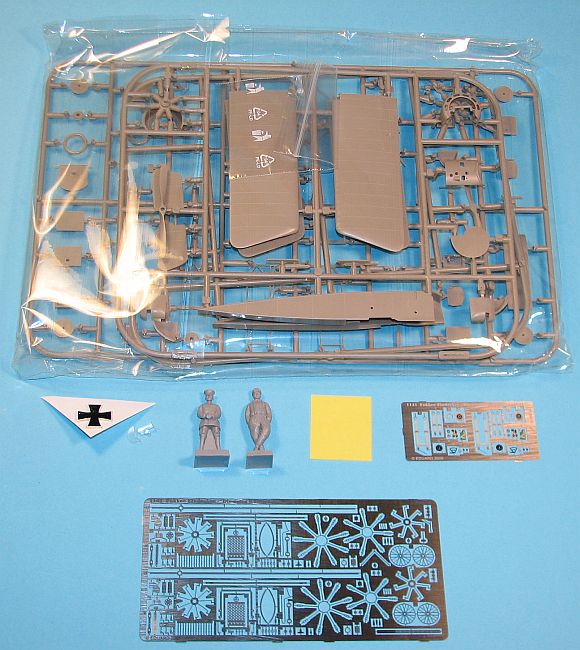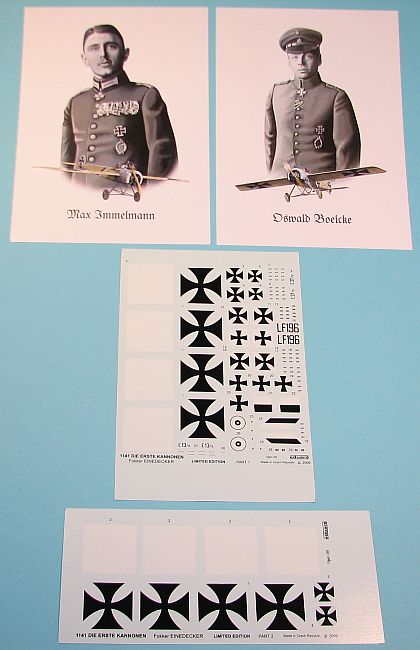
Eduard 1/48 Die Erste Kannonen/Fokker Eindecker FL
By Matt Bittner
Introduction
Since Eduard provided an excellent intro in their own instructions, I will quote them:
"In early 1915 all of the air forces taking part in the battles over the western front, solved the problem of how combat planes could be armed. The most effective offensive armament was the forward firing maching-gun; however, the problem was how to fire forward through the rotating airscrew. The solution was accomplished differently by various manufacturers and air forces. The French preferred firing through the propeller circle with deflectors on the airscrew blades or a machine gun mounted on top of the top-wing to fire over the airscrew circle. The British developed a line of pusher type fighters, amongst them the best known being the DH-2. The German were the first to accept the most sophisticated system when Anthony Fokker, a Dutchman in German service, designed and developed the synchronisation device. This device interrupted the machine-gun fire when the airscrew was inside the firing line. Fokker mounted a synchronised machine gun to a type M5K single-seat monoplane, which he personally demonstrated in late May 1915 at the front line. The success was complete, and the production of the Fokker E.I fighter was set-up immediately. Fokker produced four types of fighter monoplanes in 1915. The E.III was developed in the largest numbers, 300 Fokker E.IIIs and 115 other types (E.I, E.II and E.IV) were produced. When these aircraft reached the front lines they brought in a new style of air combat. Flown by enthusiastic pilots like Boelcke and Immelmann, they changed fighter aircraft into dangerous weapons and became a sign of German air superiourity in late 1915 and early 1916."
The Kit
Since Kit #1141 is a Dual Combo release there are two separate models within one box. With the kits you can build either the Fokker E.I, E.II or E.III in 1/48. However, it's not just the injected sprues that are a hit in this release. Not only does the kit come with two sets of complete (and some prepainted) photoetch (one for each kit) as well as superlative decals for multiple schemes, you also release an Iron Cross pin, profiles of Boelcke and Immelmann, and two excellently molded figures of those two German men that really defined how Germany flew and fought in the air in World War 1.Decals are provided for the following:
- Ltn zur See Gotthard Sachsenberg, MFA, Mariakerke, Belgium, November 1915 (Fokker E. III)
- Ltn d R Max Immelmann, FA62, Douai, France, August 1915 (Fokker E. I)
- Ltn Otto Parschau, Kagohl 1, Ghistelles, Belgium, early 1916 (prob. Fokker E.II)
- Ernst Freiherr von Althaus, FA23, 1915 (Fokker E. I)
- Ltn Oswald Boelcke and Ltn d R Max Immelmann, FA62, Douai, France, October 1915 (Fokker E. II)
Although Jim Schubert has already taken a look at when the newly-tooled Fokker Eindecker first was available, I'll still provide a run-down of what the kit entails.
First off, naturally, the cockpit. There is a lot of detail to be stuffed in there with not only injected plastic pieces, but plenty of photoetch as well. There is plenty out-of-the-box to satisfy most modelers, even some of the more AMS sufferers. There really isn't much that can be added. Once the cockpit is finished and the fuselage halves are closed then construction continues. Firewall, upper fuselage pieces, and cheeks round out the upper fuselage. The lower fuselage receives photoetch (especially the stitching) and the tail skid (although that might be best left off until the end - same with the machine gun).
Photoetch provides the option of either solid or spoked wheels (nice touch!) which will eventually be added to the landing gear struts (also might be left off until the end). Then tail parts are added (again, rudder might be best left off until last) and the wings. Now it's ready for painting!Thankfully Eduard provides a full rigging diagram to help with that step (and which should not be done until the last step). Also included on the instruction sheet is how to paint the two figures.
Conclusion
If 1/48 WW1 is anything of an interest, especially German-types, then you're doing yourself a disservice by not purchasing this Dual Combo. The kit is excellent to start out, and then on top of that you get two of them, and all the extra "goodies" (especially the figures). Defintely recommended!
IM definitely thanks Eduard for providing the Dual Combo as a review sample.



